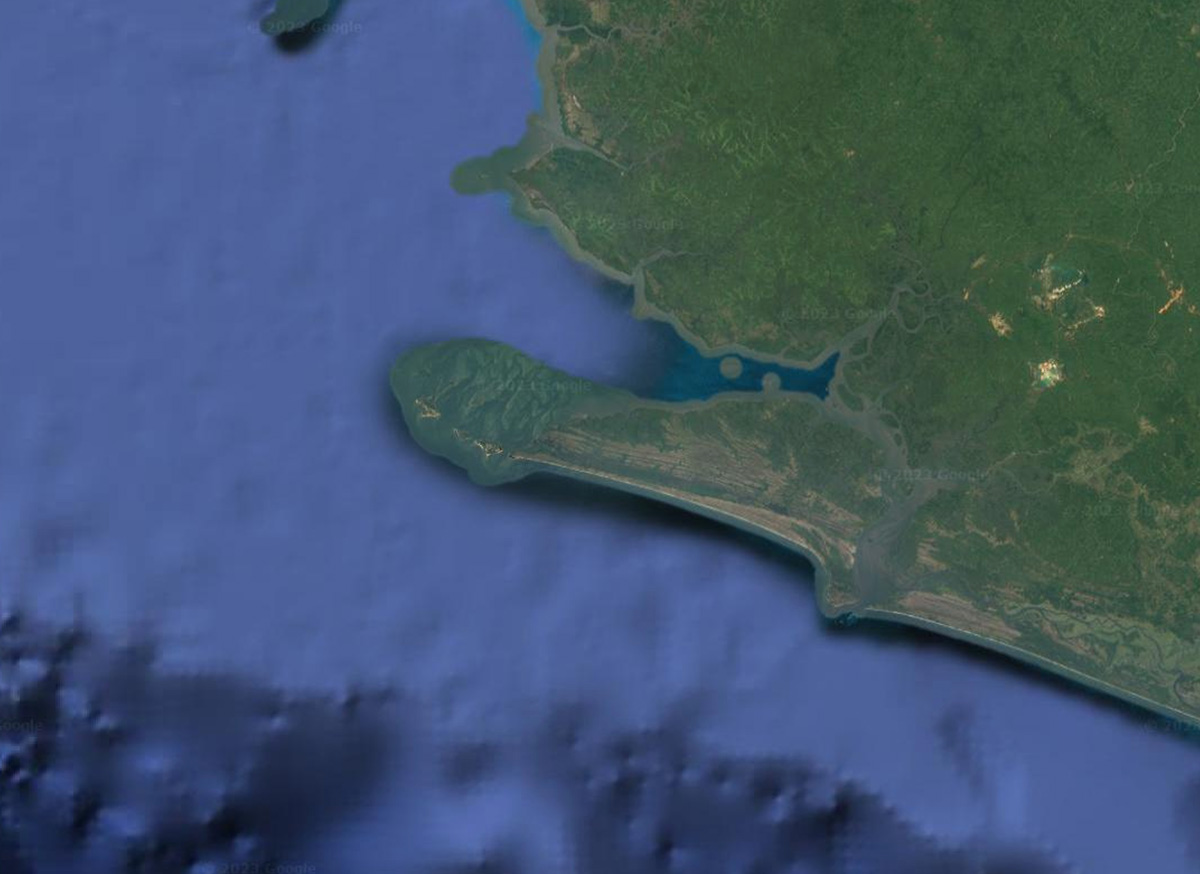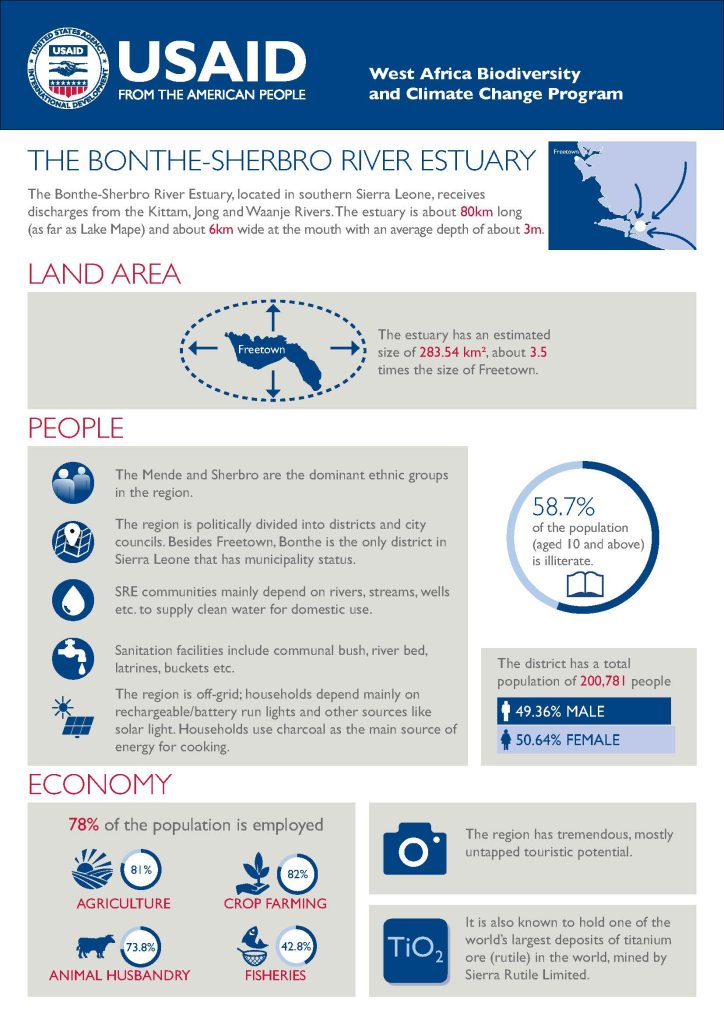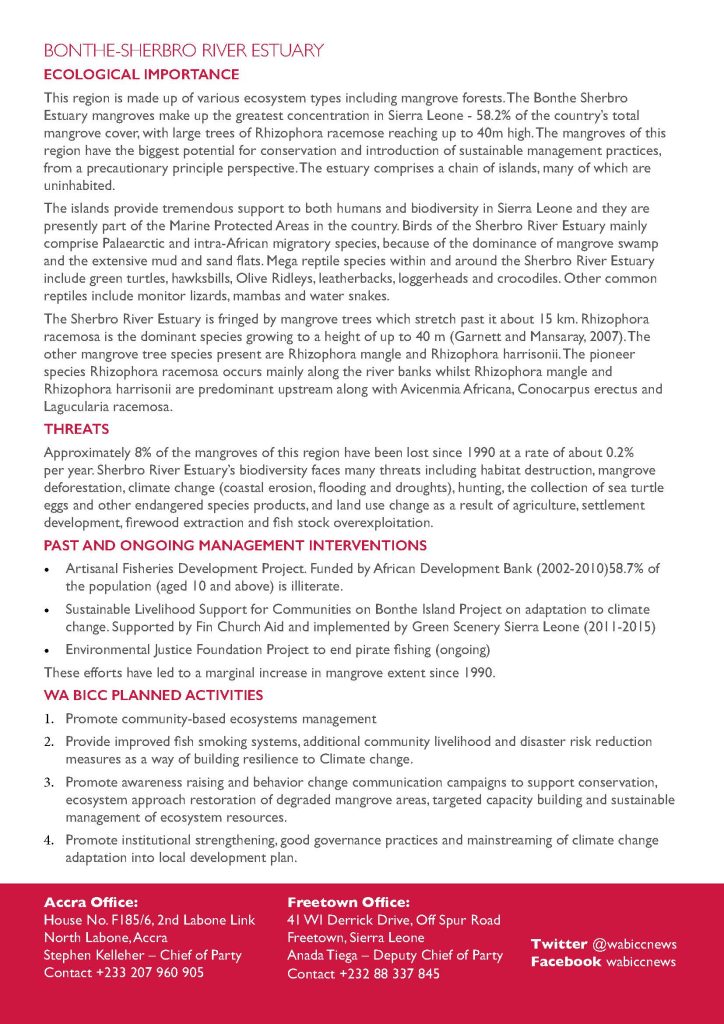
The Sherbro River Estuary Conservation Initiative
After an unwavering dedication spanning four years, the National Protected Areas Authority (NPAA) of Sierra Leone, in collaboration with the USAID-funded West Africa Biodiversity and Climate Change (WA BiCC) program, has made significant strides towards fortifying the management of the Sherbro River Estuary (SRE). This vital coastal region, comprising a diverse range of marine ecosystems, has witnessed the successful review and endorsement of the SRE Co-Management Plan by all stakeholders. Moreover, local communities have rallied behind a petition to formally designate the SRE as a Ramsar Site – a Wetland of International Importance – which has been submitted for consideration by the Ramsar Secretariat.
Stretching along the southeastern coast of Sierra Leone, the Sherbro River Estuary landscape, encompassing the Bonthe-Sherbro Island, extends for 80 kilometers, expanding from a 3-meter width upstream to 6 kilometers at its confluence with the Atlantic Ocean. Covering approximately 284,000 hectares (2,840 km2), it dwarfs the nation’s capital, Freetown, by over threefold. This estuarine ecosystem, one of Sierra Leone’s four marine protected areas, is a haven for diverse habitats, offering invaluable support to human livelihoods and biodiversity. Its dominant features are the sprawling mangrove forests and expansive mud and sand flats that provide sanctuary to several sea turtle species, including olive ridleys, leatherbacks, and loggerheads. Various reptiles, such as crocodiles, monitor lizards, mambas, and water snakes, thrive within this ecosystem, with the red mangrove species Rhizophora racemosa standing as the pioneering mangrove, capable of reaching up to 40 meters in height.
Anchoring food security and economic growth, the mangroves of the SRE play an indispensable role by serving as breeding grounds for fish and an array of marine life. While agriculture, crop farming, and animal husbandry form the economic backbone, the fishing sector, employing 43% of the population, remains of paramount importance.
The biodiversity-rich Sherbro River Estuary faces substantial threats. Over the past three decades, approximately 8% of the mangroves have succumbed to factors like firewood and construction-driven mangrove removal. Furthermore, habitat destruction, exploitation of endangered species and their eggs, agricultural encroachment, settlement expansion, hunting, and overfishing pose significant challenges. Climate change aggravates these issues, contributing to habitat degradation through droughts, coastal erosion, and increased storm surges.
Since 2016, the WA BiCC program has been actively engaged in the Sierra Leone Coastal Landscape Complex, which encompasses the SRE, Sierra Leone River Estuary, Scarcies River Estuary, and Yawri Bay. Interventions have ranged from vulnerability assessments and climate change mitigation options analysis to the establishment of the SRE Co-Management Committee. Collaborative efforts with local communities include the promotion of Village Saving and Loan Associations (VSLAs), mangrove restoration, and biodiversity conservation awareness campaigns, notably the radio drama series “Watasay Ston.”
A momentous occasion unfolded in Bo, Sierra Leone, as local leaders and government representatives gathered in September 2020 to review and endorse the co-management plan. This event showcased their resolute commitment to collaborating and implementing this pivotal framework. The recognition of the SRE as a Wetland of International Importance (Ramsar Site) marked another significant achievement.
Papa Pwe, Paramount Chief of the Bagruwa Chiefdom, expressed, “The intervention of WA BiCC has been a sound opportunity to transform our knowledge, attitudes and practices towards biodiversity conservation and climate change issues.” With local participation, the SRE Co-Management Plan, developed in collaboration with the NPAA and stakeholders from ten chiefdoms, offers a blueprint for inclusive and sustainable SRE management. This plan has facilitated the Ramsar listing application, with aspirations of extending the designation to other coastal landscapes within Sierra Leone.
As stakeholders continue their collective commitment to safeguarding the SRE, Sulaiman T. Jalloh from the Ministry of Local Government and Rural Development emphasized the enforcement of protective bylaws, while Joseph Musa, NPAA Executive Director, urged perseverance for the initiative’s success. This collaborative endeavor sets the stage for transforming the Sherbro River Estuary into an eco-tourism hotspot, further highlighting its importance for generations to come.


Leave a comment